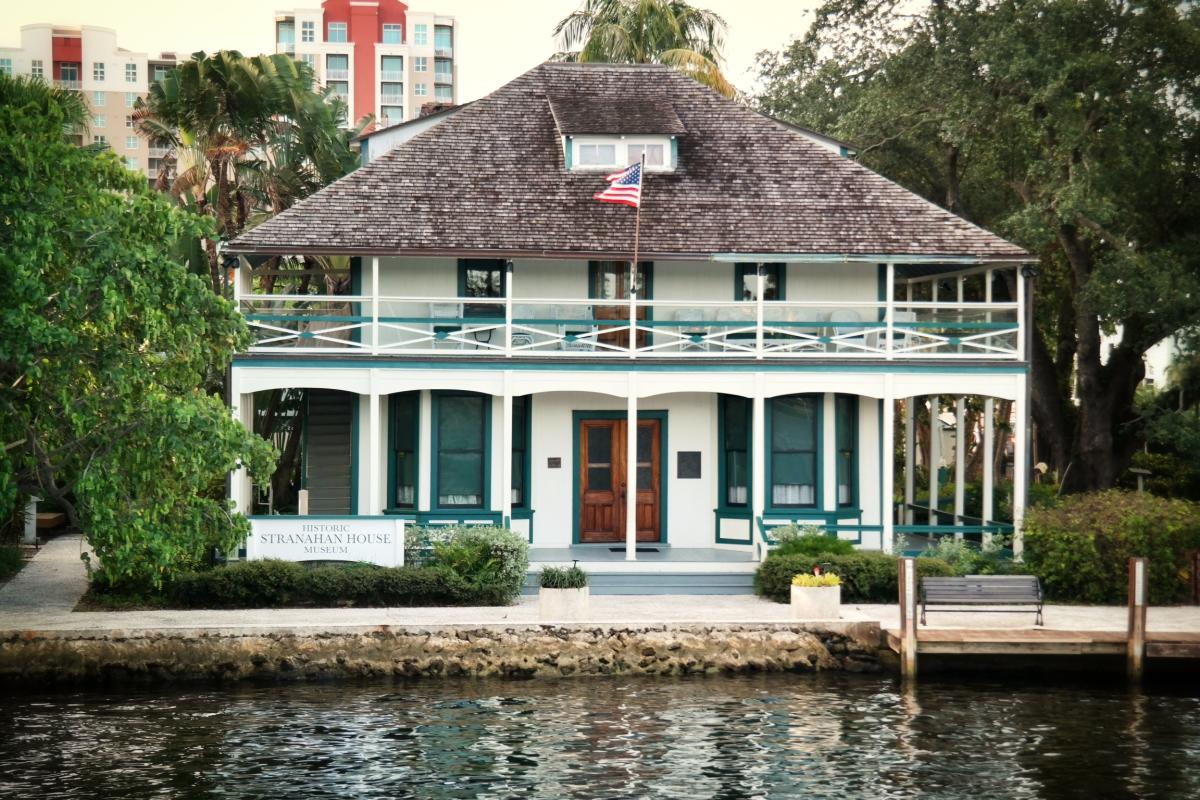Stranahan House: A Rare Devotion to History
We often read of neighborhood efforts to save historic buildings and landmark trees from development. Builders buy property in historic tree-shaded neighborhoods, then demolish old homes and cut down those hundred-year-old trees – the very thing that attracts them in the first place – to build huge houses out of character with their rustic surroundings. Community associations often object, but their efforts usually prove futile, “Growth over preservation” seems to be the mantra that too often guides the decisions of government officials.
Fort Lauderdale has seen more than its share of these decisions in recent years. Few of the structures built by pioneers have escaped the sprawl of development. But fortunately not all. And by far the most noteworthy is the city’s first residential house, which figured in almost every aspect of the city’s formation. It has been preserved by history-conscious citizens. Anyone familiar with Fort Lauderdale history knows we refer to the Stranahan House.

The Stranahan House is now literally a museum, supported by its own foundation. Like colonial-era buildings saved in old northern cities, it has become a tourist attraction, continuously memorializing the extraordinary family who first saw the potential of a vibrant city along the banks of the New River.
Frank Stranahan did many significant things in his life, not the least of which was marrying a young school teacher named Julia Ivy Cromartie. She arrived in Fort Lauderdale at age 18 in 1899 from Lemon City, today’s Miami. Frank had arrived six years earlier from Melbourne, Florida where he gained experience in government. He was the first pioneer to establish roots in the area, setting up a trading post and tourist camp on the New River. He ran a ferry and was involved in a stagecoach route to Miami until the railroad came through. He expanded into a general store and even a bank and post office on the site. He later moved his businesses and turned the building into his residence.
Joined by his new wife, he had a hand in virtually every aspect of the city’s development – transportation, education, medicine, urban planning, banking, and establishing cordial relations with the Seminole tribe. You name it and the Stranahans were involved either as founders or facilitators. Ivy Stranahan was a woman before her time, a conspicuous champion of the underdog. Her work included helping establish the first black high school and hospital. The Stranahans even brought baseball to town and built the first football field at a school.
Frank Stranahan achieved all this while in chronic ill health. He died in 1929, but Ivy continued his dedication to the growing community for the rest of her life. She lived to be 90, by which time their residence had achieved recognition as a community treasure. She lived long enough to see the beginnings of its historical recognition. In 1962 the Fort Lauderdale Historical Society, under the leadership of lawyer/banker George English, formed the Stranahan Foundation which evolved into the Stranahan House, Inc., a non-profit entity. The Historical Society had purchased the property in 1975 and with the aid of the Board of Realtors, by 1984 had restored the house to its 1915 appearance we see today.
That view is best from across the river in an unobstructed park-like setting in Rio Vista, the same sight that the pioneer boat visitors first saw 124 years ago.
Maintaining the museum is a work of love for a number of volunteers, but it also takes money. Its current board, with Jennifer Belt as executive director and Matthew McAloon its incoming president, works to keep the historic appearance amid all the high-rise buildings that have risen in recent years. It even spends money on an arborist to preserve a large oak tree that shows in the oldest photographs of the property. Staff member Greg Musser has researched the tree and figures it is over 130 years old. It has also been discovered that both Stranahans were nature lovers who valued trees and sought to preserve them.
The organization has received grants from community groups over the years and is currently organizing a capital campaign. Among its efforts is an application to the state for a $500,000 grant.
The board has coined a slogan to define its spirit. Board member Steve Buckley expresses it: “It’s hard to fathom all the things the Stranahans were involved in in the early days. We like to say they paid forward, and now we’re paying back.”
